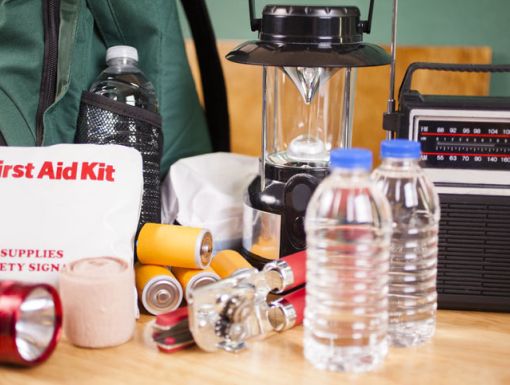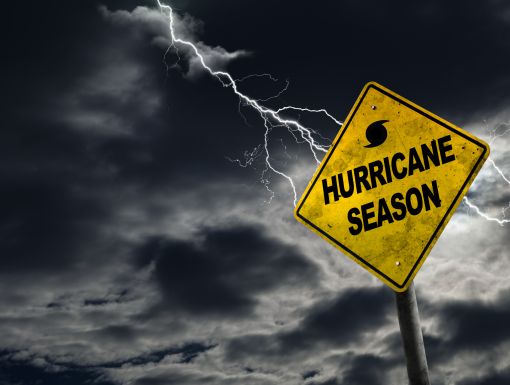
How To Build A Disaster Supply Kit In 2025
Being prepared means having the right supplies you may need if an emergency or disaster happens. With hurricane season already underway, it's even more important to be prepared for a hurricane or unusual events. The last thing you want to do is find yourself feeling ill or unprepared while away from home and not have the basic essentials.
A disaster supply kit is a collection of basic items your household may need in the event of an emergency. Keep your supplies in an easy-to-carry emergency preparedness kit that you can use at home or take with you in case you must evacuate.
Why is having an emergency disaster kit important?
It’s important to assemble your kit well in advance of an emergency, as you may have to evacuate at a moment’s notice and just take essentials with you. If you wait, you will probably not have time to search for the supplies you need or shop for them. Having it prepared reduces your stress and increases your safety if disaster strikes. A ready-to-go supply kit makes sure your family has what they need to meet basic needs during an emergency.
What should be included in a disaster supply kit?
Every basic disaster supply kit should contain geographically specific necessities to get you, and your family, through at least 72 hours, such as water, non-perishable food, a first aid kit, a flashlight, extra batteries, a radio, and hygiene supplies. Below is a customizable checklist on how to build your emergency preparedness kit and make sure you have your disaster supply kit essentials so you’re ready for the unexpected.
Disaster supply kit basic supplies:
Basic Supplies
- Water: Plan for one gallon per person per day for drinking and sanitation
- Food: Include at least a three-day supply of non-perishable items. Pack a can opener if your kit contains canned food
- Battery-powered radio and a NOAA Weather Radio with tone alert and extra batteries for both
- Disinfectant
- Flashlight and extra batteries
- First aid kit: Check that it’s stocked and restock it as necessary to include items like disposable gloves, antiseptic wipes and adhesive bandages
- Whistle to signal for help
- Hygiene supplies: Include baby wipes, garbage bags and plastic ties for sanitation
- Personal hygiene items including feminine supplies, toothbrush and toothpaste
- Personal protective equipment (PPE), such as masks, gloves and hand sanitizer.
Disaster supply kit emergency tools and gear
- Dust mask or cotton T-shirt to help filter the air, if the air is contaminated
- Plastic sheeting and duct tape to shelter-in-place
- Wrench or pliers to turn off utilities, if needed
- Matches in a waterproof container
- Paper and pencil: For note-taking or leaving messages.
- Compass: Helps with navigation in case you’re displaced or lost.
- Signal flares: A great tool for showing your location to rescue teams.
Additional items to customize your kit
Beyond the essentials, consider your family’s specific needs when assembling your kit. These disaster preparedness tips will help you customize your kit based on your household’s unique requirements:
- Batteries or power supplies for medical devices like CPAP (continuous positive airway pressure) machines, wheelchairs or insulin pumps
- Extra supplies for medical equipment, such as diabetic testing supplies or infusion tubing
- Sterile water if needed for medical device cleaning
- Emergency reference materials such as a first aid book
- Medicine dropper
Documents and money
- Cash or travelers’ checks
- Important family documents such as copies of insurance policies, identification and bank account records in a waterproof, portable container
Emergency cooking and cleaning supplies
- Mess kits, paper plates, utensils and paper towels
- Unscented, color safe household chlorine bleach to use as a disinfectant (diluted nine parts water to one part bleach), or in an emergency to treat water (16 drops of regular household liquid bleach per gallon of water)
- Paper towels
- Fire extinguisher
Family and comfort items
- Rain gear and clothing for different weather conditions
- Blankets, sleeping bags or a small tent for outdoor emergencies
- Infant formula, diapers and any other supplies for children.
- Thermometer
- Toys, books, or games for keeping children entertained and calm during stressful situations.
How should I store and maintain an emergency disaster kit?
- Store your disaster supply kit in a location that’s easy to access. You may need to grab it in a hurry, so keep it near your main exit or in your car.
- Pack smaller individual kits for each family member. Include lightweight essentials that they can easily carry.
How often should I update my emergency preparedness kit?
You should review and update your kit every six months. Replace expired food and supplies, refresh batteries and update documents as necessary.
Are there pre-made disaster kits available to buy?
Yes, there are many companies selling comprehensive emergency preparedness kits. However, building your own makes sure it’s tailored to your unique needs.
By assembling your disaster supply kit now, you’ll have peace of mind knowing you’re ready to handle unexpected events. Don’t wait until the last minute when supplies might be limited or unavailable.
Get more tips to help prepare for hurricane season.



